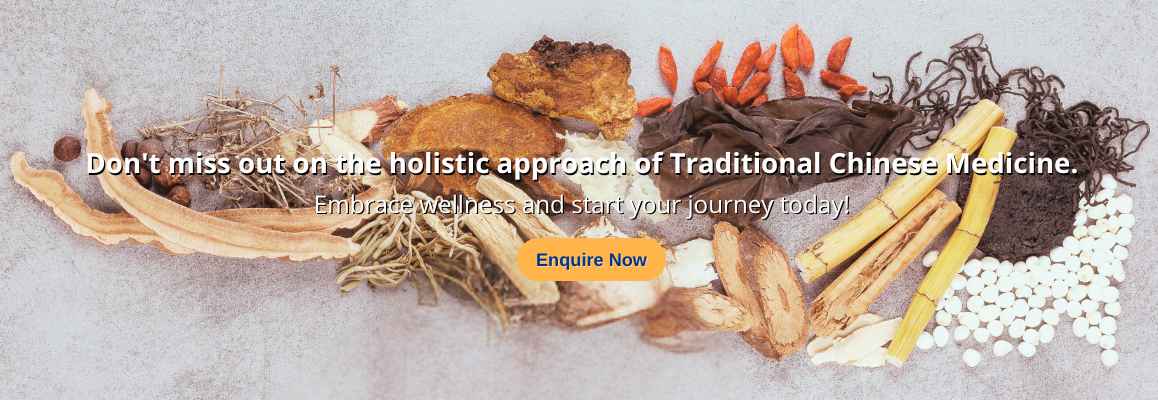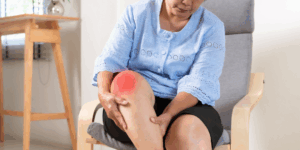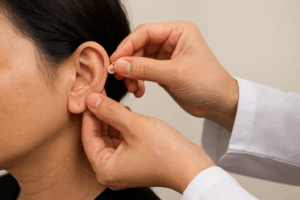Frozen shoulder, also known as adhesive capsulitis, is a condition that causes stiffness, pain, and limited mobility in the shoulder joint. This condition can significantly affect daily activities, making simple movements such as reaching overhead or behind the back challenging. While conventional treatments often involve painkillers, physical therapy, or even surgery, Traditional Chinese Medicine (TCM) offers a natural and holistic approach to relieving pain and restoring shoulder function.

Understanding Frozen Shoulder from a TCM Perspective
In TCM, frozen shoulder is often linked to stagnation of Qi and blood in the meridians surrounding the shoulder joint. Factors such as aging, prolonged immobility, poor posture, and exposure to cold or dampness can disrupt the smooth flow of Qi, leading to pain and stiffness. TCM aims to restore balance in the body by improving circulation, dispelling cold and dampness, and nourishing the tendons and ligaments.
How TCM Treats Frozen Shoulder
TCM offers various treatment methods to relieve pain, restore mobility, and prevent recurrence of frozen shoulder. These methods include acupuncture, Tuina therapy, cupping, and herbal medicine.
Acupuncture
Acupuncture is a key component of TCM that involves inserting fine needles into specific acupoints to regulate Qi and blood flow. For frozen shoulder, acupuncturists focus on points that reduce inflammation, relieve muscle tension, and improve circulation.

- Jianyu 肩髃 (LI15) is located on the shoulder and is commonly used to relieve stiffness and pain.
- Jianjing 肩井 (GB21) is positioned at the top of the shoulder and helps to release muscle tightness.
- Tianzong 天宗 (SI11) is found on the scapula and is effective in improving shoulder mobility.
Acupuncture stimulates the nervous system and triggers the release of endorphins, the body’s natural painkillers. It also promotes relaxation of the shoulder muscles, making movement easier over time. Regular sessions help break the cycle of pain and stiffness, allowing for gradual improvement in flexibility.
Tuina Therapy
Tuina is a therapeutic massage technique that involves kneading, rolling, and pressing motions to stimulate acupuncture points and meridians. It helps loosen stiff muscles, break up adhesions, and improve blood circulation in the affected area.
- Gentle kneading along the shoulder joint relieves tension and improves flexibility.
- Deep tissue pressure on trigger points as well as acupressure points helps release knots and tightness in the shoulder muscles.
- Joint mobilization techniques encourage movement and restore range of motion.
Tuina therapy is often combined with acupuncture to enhance its effects, providing both pain relief and improved mobility.
Cupping Therapy
Cupping therapy involves placing glass or plastic cups on the skin to create suction. This technique draws stagnant blood and toxins to the surface, allowing fresh oxygenated blood to flow into the affected area.
- Moving cupping, where the cups are slid across the shoulder area, helps break up adhesions and improve range of motion.
- Flash cupping, which involves quick suction and release, stimulates the body’s natural healing response.
- Dry cupping where cups are placed on parts of the body and left for about 10 minutes. This increases circulation and reduces muscle tightness.
By relieving tension and promoting circulation, cupping therapy enhances flexibility and accelerates the recovery process.
Herbal Medicine
TCM herbal medicine plays a crucial role in treating frozen shoulder from within by strengthening the body’s internal energy and addressing underlying imbalances. Different formulations are tailored based on the patient’s condition.
- Herbs that invigorate blood circulation such as Dang Gui 当归 (Angelica Sinensis) and Chuan Xiong 川芎 (Ligusticum Chuanxiong) help relieve stagnation that causes pain.
- Herbs that dispel cold and dampness such as Gui Zhi 桂枝 (Cinnamon Twig) and Du Huo 独活 (Angelica Pubescens) help warm the meridians and reduce stiffness.
- Herbs that strengthen tendons and muscles such as Xu Duan 续断 (Dipsacus) and Sang Ji Sheng 桑寄生 (Taxillus) support the healing of connective tissues.
Herbal formulas may be prescribed as herbal packs, powder, pills, or topical applications to complement acupuncture and manual therapy.
Benefits of TCM for Frozen Shoulder
Many patients with frozen shoulder have experienced significant improvements with TCM treatments.
- Pain Relief: Acupuncture and Tuina help reduce pain by promoting the smooth flow of Qi and blood.
- Improved Mobility: Regular treatments help restore range of motion in the shoulder joint.
- Long-Term Healing: While some pain medications provide temporary relief, regular TCM treatment addresses deeper issues and imbalances regarding frozen shoulder, reducing the risks of recurrence.
Integrating TCM into Your Recovery Plan
For those suffering from frozen shoulder, it is important to seek early treatment to prevent further stiffness and prolonged discomfort. A comprehensive TCM treatment plan, tailored to individual needs, can enhance recovery and prevent future episodes.
Regain Shoulder Mobility with TCM
If you are struggling with frozen shoulder and looking for a natural, effective treatment, Traditional Chinese Medicine may be the solution. Our experienced TCM physicians can help relieve your pain and restore mobility through acupuncture, Tuina, and herbal therapy. Book a consultation today and take the first step toward a pain-free life.











